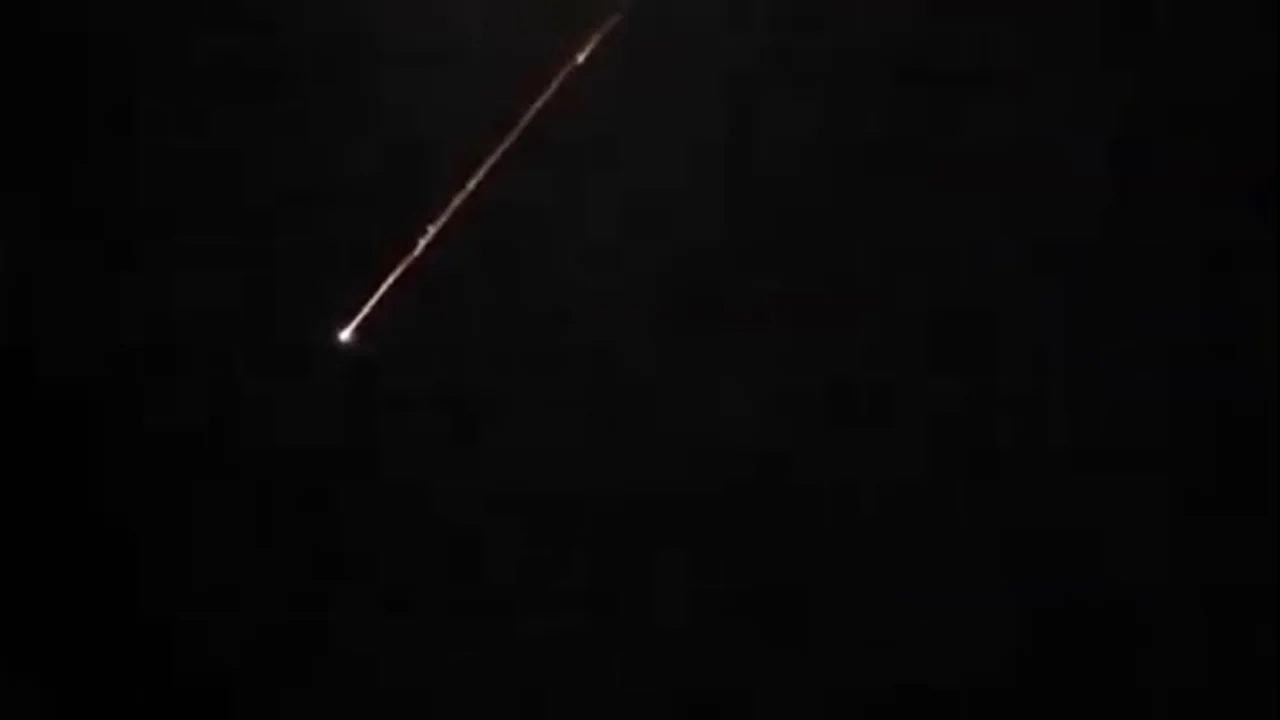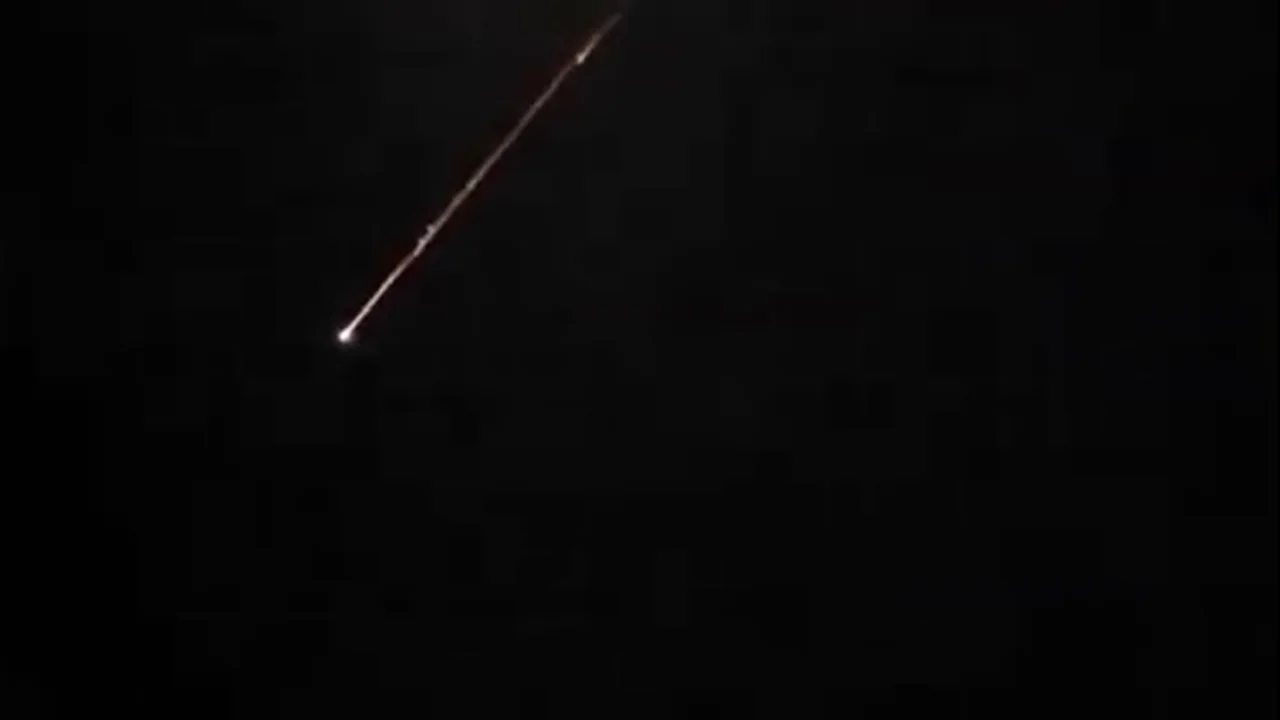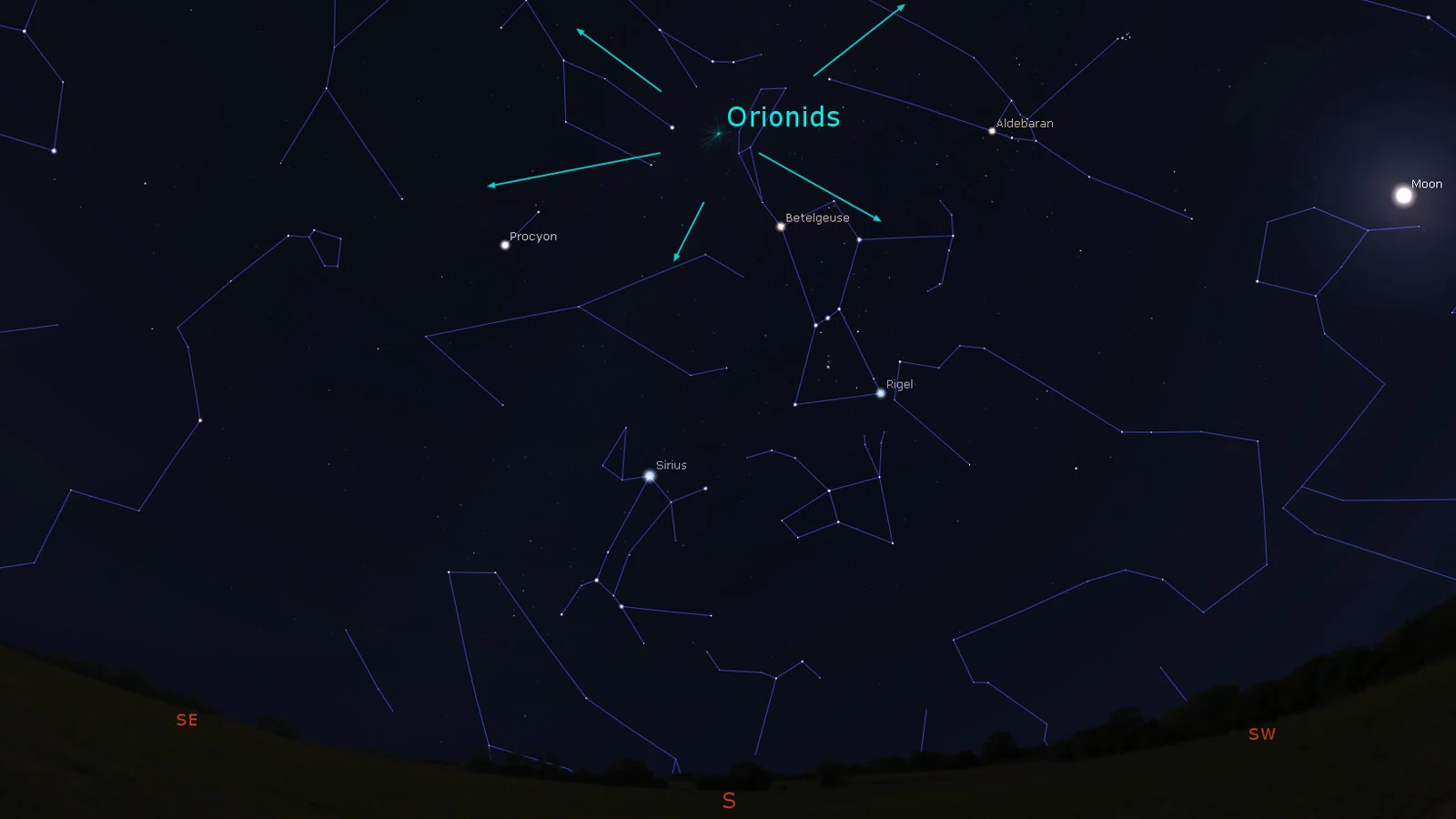
Russian spy satellite blazed a fiery trail over Michigan Tuesday night
Although it appeared to be a meteor, a few things about this fireball betrayed its true origins.
Hundreds or perhaps thousands of people across the U.S. Midwest and Ontario witnessed a blazing fireball flying through the night sky earlier this week. Although the object undoubtedly came from space, further investigation into the event revealed it was of Earthly origin.
As of Thursday morning, over 150 reports were logged with the American Meteor Society after a bright fireball passed over central Michigan just before 1 a.m. ET, on October 20, 2021. Reports came in from as far away as Inglewood, Ontario, and Elmwood, Tennessee, as the object left a fiery trail through the sky that stretched close to 500 km long.

This 'heat map' shows the concentration of reports logged by witnesses of the October 19-20 fireball, along with an arrow representing its estimated track across the sky from start to finish. Credit: American Meteor Society
AS THE KIDS SAY, IT'S A LITTLE SUS
The object that caused this fireball most definitely came from space, and it at least appeared to be a meteor. However, the footage raised some suspicions that this was something else.
When a rock from space (aka a meteoroid) plunges into Earth's atmosphere, it's travelling at a speed of between 11-72 kilometres per second (40,000-260,000 km/h). While larger meteoroids can last a bit longer at slower speeds, they still typically flash by in a few seconds and are gone. So to capture a real meteor fireball, you need to have a camera already set up, recording and pointed in the right direction when it passes overhead. Otherwise, you have to be extremely lucky to catch one by accident while filming something else.
Based on the reports logged by the AMS, this fireball lasted several minutes from start to finish. So, this object was travelling far slower than a meteoroid. Witnesses close to its trajectory each reported seeing it from between 45 seconds to just over a minute as it flew from horizon to horizon. This was more than enough time for many people to get out their cellphones to snap pictures or record videos.
Watch below: This video of the October 19-20 fireball was submitted to the AMS by Stanley Waldrup from SE Michigan
Also, a few actual meteor fireballs have been observed to break apart as they flew through the air. However, when an object leaves behind a trail of flaming debris like this one did, it points to something of Earthly origin. Thus, it was likely a spent rocket booster or a defunct satellite that had re-entered the atmosphere after spending some time orbiting the planet.
Additionally, that flaming debris raised another flag. Most meteor fireballs appear to glow white, perhaps with a tinge of blue, green, or yellow. This is due to the rock compressing the air in its path, causing the air molecules themselves to emit coloured flashes of light. The heat from the compression can also vapourize metals and minerals from the meteoroid, which glow with their own colours. However, the fireball over Michigan appeared to be on fire as it flew through the air. That also pointed to something made by humans and launched into space.

This image of the fireball, screen-capped from one of the videos shot on Tuesday night, shows its orange glow as it trails flaming debris. Credit: Brian Stalsonburg
The origin of this object was confirmed by Harvard-Smithsonian astronomer Jonathan McDowell on Twitter. He had been tracking the Kosmos-2551 Russian satellite since its launch on September 9. According to McDowell, the satellite apparently failed when it reached orbit. He predicted it would re-enter Earth's atmosphere sometime on October 19.
On October 20, McDowell followed up by confirming that Kosmos-2551 had re-entered the atmosphere at the same time and location that the Michigan fireball was seen.
In another tweet from Wednesday morning, McDowell said: "The fireball network confirms that the event seen in Michigan was at 0443 UTC (1243 EDT) which is the exact predicted time Kosmos-2551 passed over the region and within the re-entry time uncertainty window given by Space Force. So I conclude that the ID with Kosmos-2551 is solid."
As reported by Anatoly Zak on RussianSpaceWeb.com, Kosmos-2551 has been identified as a classified military payload with an "optical reconnaissance" mission. This means it was likely a spy satellite. Sent into a polar orbit, it continued circling Earth for over a month and a half after failing until it finally burned up on re-entry.
According to McDowell, with the satellite weighing in at around 500 kg, it was unlikely that any debris from it would have reached the ground.
THE ORIONIDS
Real meteors are zipping through the night sky these days.
On any night of the year, skywatchers can spot the occasional 'sporadic' meteor — just some random bit of dust or grit from space hitting the atmosphere. However, we are in the middle of the Orionid meteor shower right now, as bits of debris from Halley's Comet flash through the atmosphere.

The radiant of the Orionid meteor shower, on the night of October 20-21. Credit: Stellarium
This year's Orionids peak was spoiled some by the presence of the Hunter's Moon in the sky at the same time. While this shower typically delivers up to 20 meteors per hour during the peak, the Full Moon's light would have washed out the dimmer flashes. Thus, stargazers would only have seen maybe 5 meteors per hour.
With the Orionids having peaked early Thursday morning, the event is ramping down now. There's usually a chance of seeing around 10-15 meteors per hour in the few days after the peak. In this case, that will still be reduced by the Moon's light to a handful or so.










